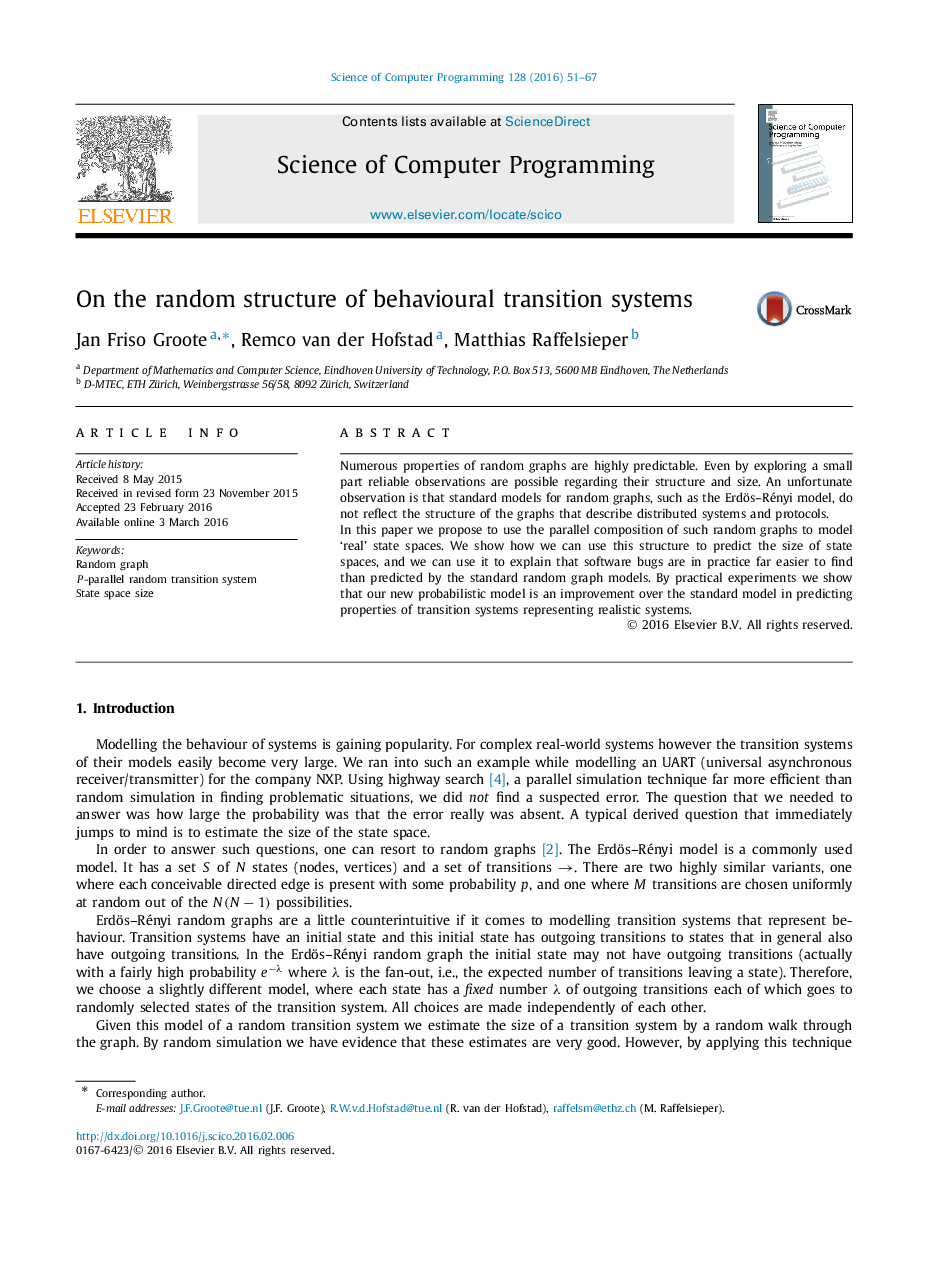| Article ID | Journal | Published Year | Pages | File Type |
|---|---|---|---|---|
| 433203 | Science of Computer Programming | 2016 | 17 Pages |
•We present methods to estimate the total size of a state space representing software.•We propose the parallel composition of random graphs as a good representation of the state space of software.•Examples show that our new model works remarkably well, particularly compared to more classic random graphs.•This new model also explains why some software bugs are much harder to find than others.
Numerous properties of random graphs are highly predictable. Even by exploring a small part reliable observations are possible regarding their structure and size. An unfortunate observation is that standard models for random graphs, such as the Erdös–Rényi model, do not reflect the structure of the graphs that describe distributed systems and protocols.In this paper we propose to use the parallel composition of such random graphs to model ‘real’ state spaces. We show how we can use this structure to predict the size of state spaces, and we can use it to explain that software bugs are in practice far easier to find than predicted by the standard random graph models. By practical experiments we show that our new probabilistic model is an improvement over the standard model in predicting properties of transition systems representing realistic systems.
